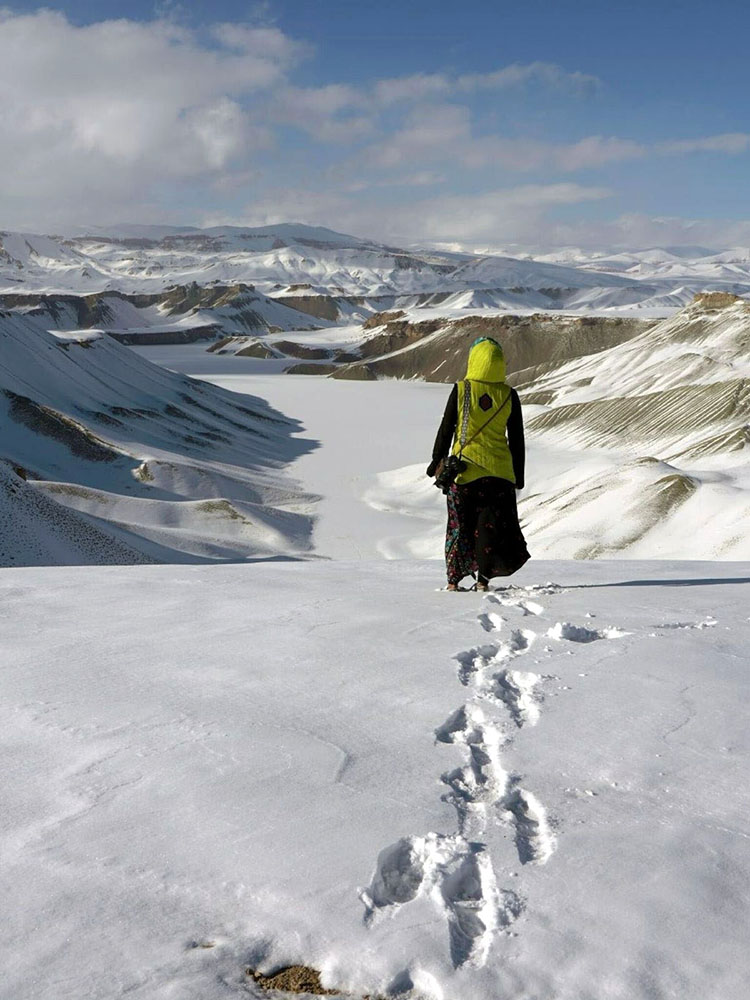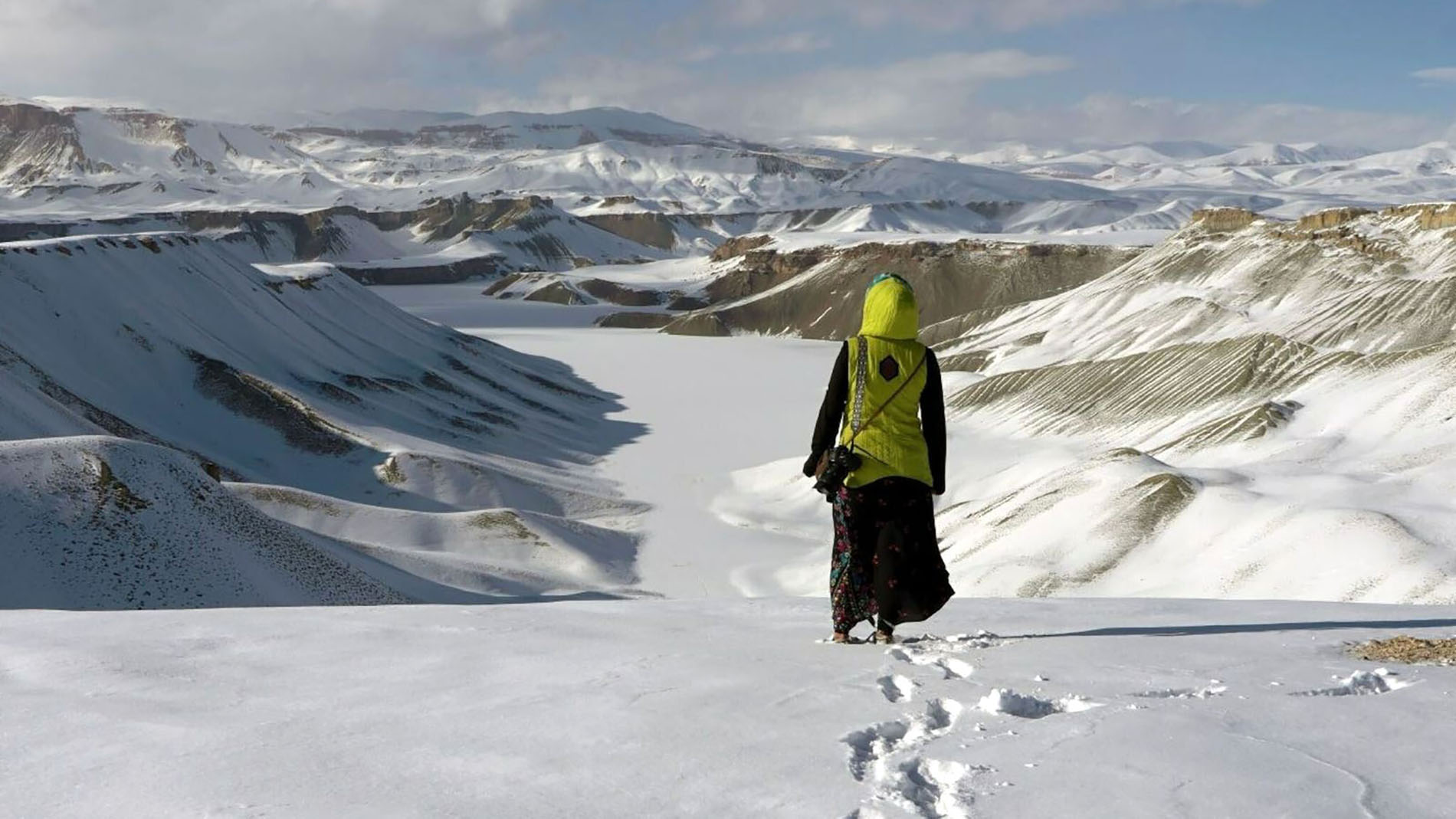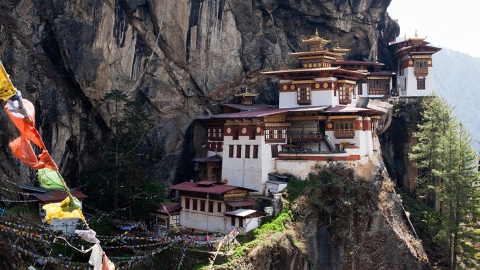For years in peacetime, Noor Ramazan, and a small team of just a few dozen tour guides and drivers in Afghanistan, have been introducing tourists to the natural wonders and historical sites of a country often remembered only by images of war and violence.
“We just want people to understand that there are still positive things in this country,” Ramazan said.
Before the war, Afghanistan was ready to show the world its beauty: the snow-capped Pamir and Hindu Kush mountains, the breathtaking Islamic architecture, the historical relics hidden in time; the delicious food, hand-woven textiles, and hospitality at the crossroads of Pashtun, Persian, Hazara, and Turkic cultures.

Mud-brick houses line the yellow sand hills surrounding the city of Bamyan.
But war still found its way to this land, ending with the Taliban taking over the Afghan government in August this year. Ramazan, and many other tour workers, were among the hundreds of thousands of Afghans who fled the country, fearing for their safety.
“Looking at history, we can see that the Taliban never understood the true meaning of tourism. They considered tourists as infidels and tour guides as slaves of infidels,” Ramazan said. “So, this is a dangerous profession.”
A young tourism industry
Before founding his travel company, Let's Be Friends Afghanistan, in 2016, Noor Ramazan worked as a security officer for an American NGO, working on agricultural projects in northern Afghanistan. He always encouraged his foreign colleagues to visit tourist sites like Hazrat Ali Mazar – a mosque in Mazar-i-Sharif – to get a sense of the country beyond the four walls of the office. To ensure his colleagues' safety, Ramazan always called the local police multiple times and provided updates on the security situation before any visit.
By 2016, he decided to pursue tourism full-time. At first, he only dared to take one or two clients a year. But after he became more known on social media, by 2020, the number of tourists seeking him had reached about 200. People still come to Afghanistan, despite advice from many governments about conflict, kidnapping and terrorism.

Tour guide Noor Ramazan wraps herself in a scarf and patu, an Afghan shawl, to protect herself from the cold winter winds in the mountainous province of Bamyan.
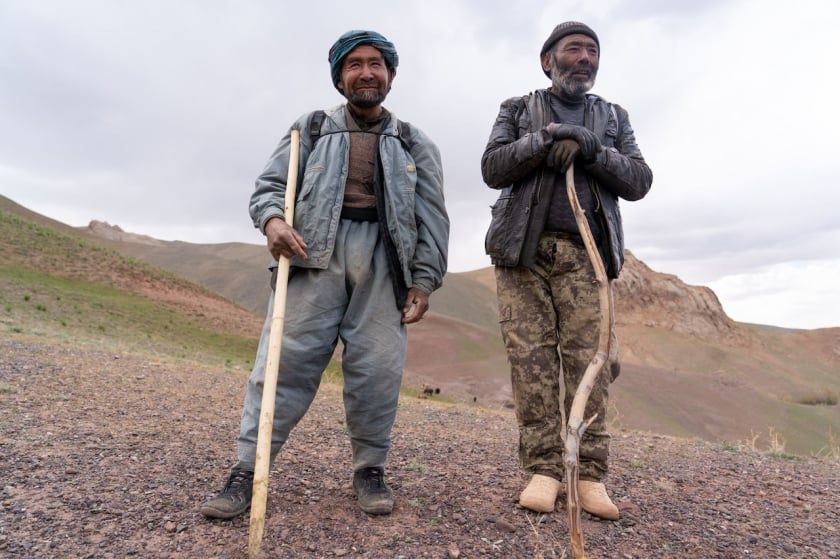
Two Hazara shepherds on Mirsha Khuja mountain, rural Bamyan.
Ramazan organizes sightseeing tours of mosques and historical sites in major cities like Herat and Kandahar. He also arranges meetings with local artisans, street photographers, and teachers. Many popular YouTubers, including Yes Theory and Drew Binsky, have shared videos of Ramazan’s travels across Afghanistan, with millions of views.
He began collaborating with other local guides across the country to build a network to help tourists. He also worked with professional skier and hiking guide Sajjad Husaini, a potential Olympic candidate. Husaini often took tourists trekking in the mountains and staying in homestays around Bamyan and Daykundi, a northern province of Afghanistan. Skiing and cycling trips were also popular.
Even as the political situation in Afghanistan began to deteriorate in May and June this year, Ramazan was flooded with inquiries from potential clients. Some said this might be their last chance to visit the country, as Afghanistan was one of the few countries to remain open to tourists during the pandemic.
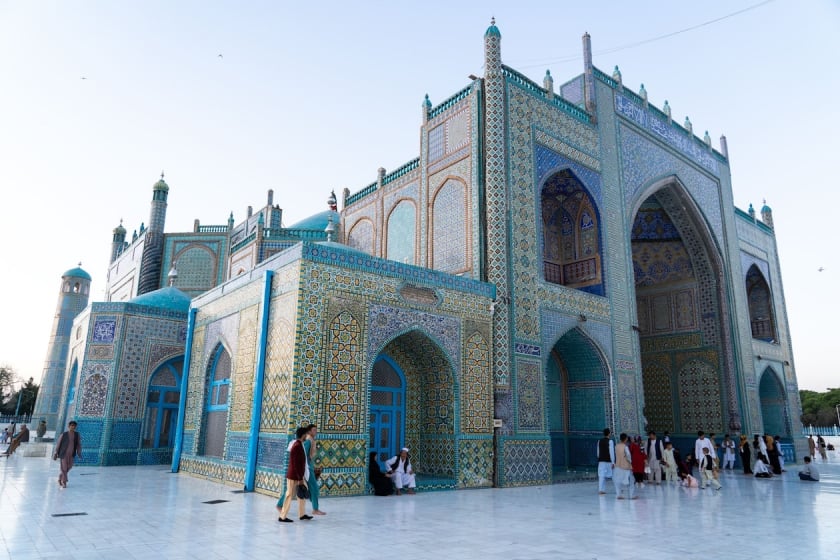
Around the Hazrat Ali Mazar Mosque in Mazar-i-Sharif, right after the solah maghrib prayer time.
Before that, the 1970s were the golden age of tourism in Afghanistan. According to the country's Ministry of Foreign Affairs, an average of 90,000 tourists a year visited 3D images of the 6th-century Buddha statues of Bamyan, the towering minarets of Jam and the bustling bazaars of Kabul.
But 1979 marked the beginning of more than 40 years of war and instability, which halted, and almost completely destroyed, Afghanistan's tourism development.
travel brings change
Before Ramazan’s Afghanistan tours exploded on social media, Gul Hussain Baizada founded a pioneering post-Taliban travel company in 2011 called Silk Road Afghanistan & Travel. Baizada has brought around 3,000 tourists to the country through his company. He believes in the power of tourism to create jobs and, through it, boost the Afghan economy. He even hired Afghanistan’s only female tour guide, Fatima Haidari.
Baizada’s inspiration for starting his own travel company came in 2009. That year, he was sent to Nepal to look at sustainable ecotourism initiatives while working for the Aga Khan Foundation. Upon his return, he was tasked with developing Afghanistan’s first ski resort, in Bamyan, a mountainous city in the east of the country.
Initially, he faced considerable resistance when he sought sponsorship for a group of female skiers. After much recruitment, and with the enthusiastic input of his wife, Baizada developed a community of female sportspeople in Bamyan. From there, other sports and tourism programs soon followed, including trekking, cycling, climbing and skiing tours.

Afghanistan’s first national park, Band-e-Amir, with its emerald lake nestled in the Hindu Kush mountains, is a popular tourist destination, with many visitors coming to hike and dine at the barbecue stalls along the coastline.
“Tourism has come and completely changed the way of life in Bamyan,” he says. “Before, Bamyan was more conservative than other areas. But now, people are more easygoing and understanding. Families are more open-minded. It’s all thanks to tourism.”
In 2012, Bamyan was like a tourist oasis in this Middle Eastern country. The mountains, lakes and rugged villages of the city, along with the Wakhan region, were all considered safe for tourists. Tourism provided income for the local people, who developed industries from handicrafts to restaurant and shop management. Women had jobs, and were more respected.
However, the situation began to deteriorate in 2019, causing a gradual decline in tourist arrivals to Bamyan. Densely populated areas such as Kabul, Kandahar and Herat are not always safe for tourists. Many tour operators such as Ramazan and Baizada have to regularly conduct multiple security checks before accepting any tours.
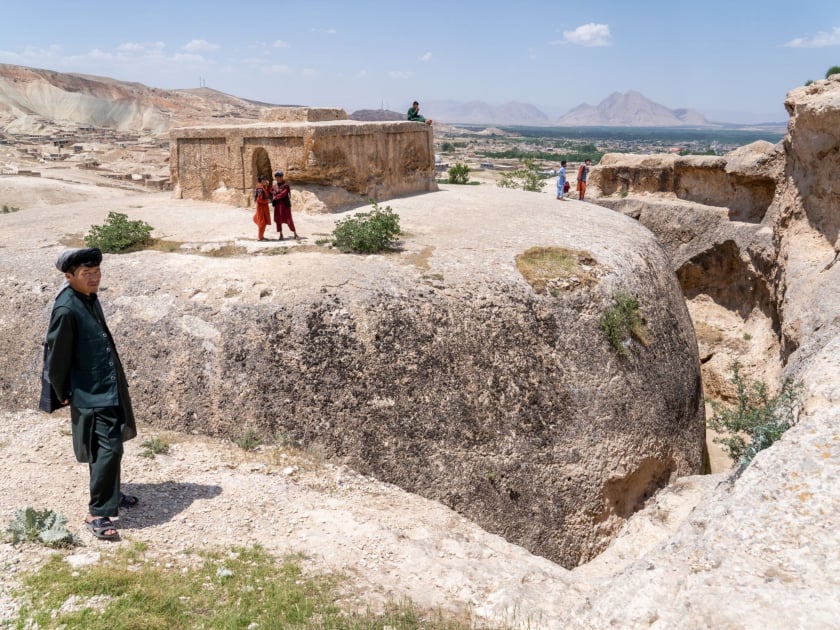
On the Takht-e Rostam Stupa, a Buddhist monastery complex built in the 3rd century, located outside the town of Haibak in Samangan province, northern Afghanistan.
Efforts to spread Afghan culture to the world
What is the future of tourism in Afghanistan?
"It's too early to judge," Ramazan said, "But right now, I'm not optimistic."
Baizada agrees, "It's hard to say whether the Taliban will accept tourism. If this is the Taliban of the 90s, then we have no hope."
Both Baizada and Ramazan are Hazara, one of Afghanistan’s largest ethnic minorities. They worry about their former colleagues who remain in Afghanistan – guides and drivers with no steady income, facing persecution from the Taliban for working with foreigners. They are trying to find ways to help their community leave the country. So far, the international travel community has raised nearly $70,000 to help the guides and their families leave.
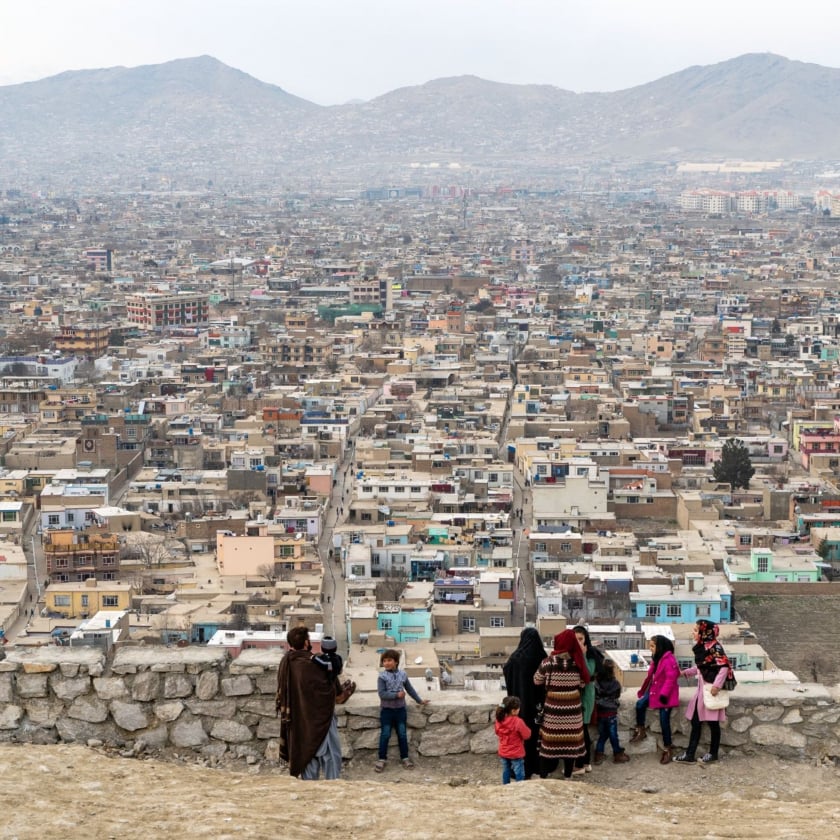
An Afghan family looks out over Kabul, the capital of Afghanistan, from a spot on Bibi Mahru hill.
Meanwhile, those who left the country are trying to adjust to their new lives away from home. Ramazan is in Australia, while Baizada, Husaini and Haidari are in Italy. Baizada still hopes to develop tourism programs run by Afghan refugees in Italy. Ramazan wants to open an Afghan cultural house in Australia, holding seminars on Afghan food, art, history and more. He strongly believes Afghanistan has not been forgotten.
"We will keep trying. I want to continue to talk about Afghanistan, and introduce Afghanistan, even from a far away place."





